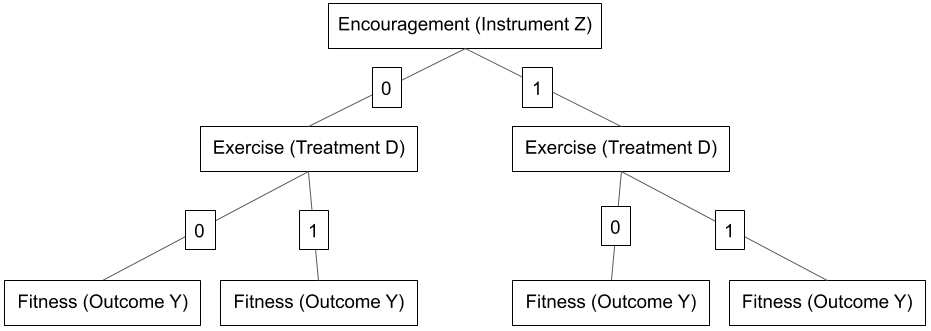12.1 Prototype Example
- Exercise → Fitness (Holland 1988)
- Treatment D: Exercise
- Outcome Y: Fitness
- Problem: People are free to decide wether to do exercise or not
- Q: What variables could affect both choice to exercise and fitness?
- Experiment:
- Randomly encourage participants to exercise
- Instrument Z: Encouragement
- Problem: Participants select their exposure
- Encouraged ones exercise or not
- Non-encouraged ones exercise or not
- Q: In the respective literature scholars discuss the role of compliers and non-compliers whereby the latter are divided into never takers, always takers and defiers. What kind kind of persons do those terms describe (taking the experiment described above)? Please discuss with your neighbour.
- Q: Look at the decision tree below. Which route(s) would be taken by an individual (given that it belongs to one of the four groups above)?

Own depiction
References
Holland, Paul W. 1988. “Causal Inference, Path Analysis, and Recursive Structural Equations Models.” Sociological Methodology 18: 449.